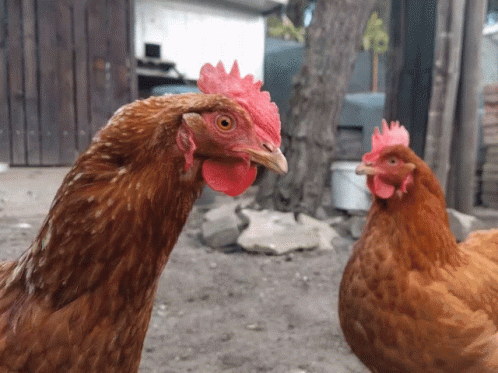Bird Flu and Breakfast: What You Need to Know About the 2025 Avian Influenza Outbreak

Natural Sciences | The Varrock Street Journal
If you're a big breakfast person, you might be just as upset with the current egg prices around the country as I am! Maybe you’ve seen the headlines—or maybe you haven’t noticed—but the culprit is the ongoing avian influenza outbreak… also known as the bird flu. And it’s not just a problem for birds—it’s a significant concern for humans as well.
In today’s newsletter, we’re going to explore the history of this virus, what it is, how it spreads, the dangers and risks associated with it, and what we can do to protect ourselves and our food systems. If you haven’t yet, brew that coffee and make your eggs, because this is an article you won’t want to miss!
🦠 What Is Avian Influenza?
Avian influenza refers to infections caused by influenza Type A viruses that primarily affect birds. Among these, the H5N1 strain has garnered significant attention due to its severe impact on both avian and human populations. While wild birds can carry the virus without showing symptoms, domestic poultry are particularly vulnerable, often experiencing severe illness and high mortality rates.CDC

🔄 How Is It Spread?
The avian influenza virus spreads through direct contact with infected birds, contaminated surfaces, or environments. Notably, the current outbreak has seen the virus affecting not only poultry but also dairy cows, with 989 herds in 17 U.S. states reporting infections as of March 18, 2025. Human cases have been linked to exposure to infected animals, emphasizing the zoonotic potential of the virus. World Health Organization (WHO)CDC+1CDC+1CDC+1World Health Organization (WHO)+1
⚠️ Why Is It So Dangerous?
While avian influenza primarily affects birds, certain strains like H5N1 have crossed species barriers, infecting humans and other mammals. Since April 2024, the U.S. has reported 70 human cases of H5N1, with exposures linked to infected poultry and dairy cows. Although human-to-human transmission remains rare, the high mortality rate in human cases is concerning. Additionally, recent viral mutations indicate the virus's adaptability to mammalian hosts, raising alarms about potential future outbreaks. CDC+7CDC+7CDC+7Medscape
🛡️ How Can We Prevent It?
Preventing avian influenza requires a multifaceted approach:
- Biosecurity Measures: Farmers should implement strict biosecurity protocols to prevent the introduction and spread of the virus among poultry and livestock.
- Surveillance: Regular monitoring of bird populations and other susceptible animals helps in early detection and containment of outbreaks.
- Public Awareness: Educating those in close contact with birds and livestock about the risks and preventive measures is crucial.
- Vaccination: While vaccines for poultry exist, research is ongoing to develop effective vaccines for humans against various strains of avian influenza.
Individuals should avoid contact with sick or dead birds, ensure proper cooking of poultry products, and adhere to public health advisories.

🕰️ A Brief History of Avian Influenza
Avian influenza has a documented history of impacting both bird and human populations:
- 1997: The first human cases of H5N1 were reported in Hong Kong, leading to 18 infections and 6 deaths.World Health Organization (WHO)
- 2003-2011: Multiple outbreaks occurred across Asia, Europe, and Africa, resulting in millions of poultry deaths and culling to control the virus.Aberdeen News
- 2024-Present: The current outbreak has seen the virus affecting a broader range of hosts, including dairy cattle, and has led to human infections in the U.S., Cambodia, and Australia. CDC
🤔 Why This Matters
Understanding avian influenza is vital due to its potential to cause widespread economic damage, threaten food security, and pose public health risks. The involvement of mammals like dairy cows in the current outbreak underscores the virus's evolving nature and the necessity for vigilant monitoring and research.
🌟 Spotlight on Future Applications
Advancements in science and technology are paving the way for better management of avian influenza:
- Genomic Surveillance: Utilizing genetic sequencing to monitor virus mutations can aid in predicting and preventing potential outbreaks.
- Universal Influenza Vaccines: Research is underway to develop vaccines effective against multiple influenza strains, offering broader protection.
- One Health Approach: Integrating human, animal, and environmental health strategies can lead to more comprehensive disease prevention and control measures.
😲 Did You Know?
- The 1918 influenza pandemic, caused by an H1N1 virus with avian origins, resulted in an estimated 50 million deaths worldwide.
- Migratory birds play a significant role in the global spread of avian influenza, carrying the virus across continents.
- Not all avian influenza viruses are highly pathogenic; some strains cause mild symptoms or none at all in birds.
🧠 Reflection Questions
- How can individuals contribute to preventing the spread of avian influenza in their communities?
- What are the ethical considerations in culling poultry to control outbreaks?
- How can international collaboration enhance the management and prevention of avian influenza?
👋 Final Thoughts
Avian influenza remains a dynamic and evolving threat with implications for animal and human health globally. Staying informed, adhering to preventive measures, and supporting ongoing research are key steps in mitigating its impact.
📚 References
Centers for Disease Control and Prevention. (2025). H5 Bird Flu: Current Situation. https://www.cdc.gov/bird-flu/situation-summary/index.html
World Health Organization. (2024). Avian Influenza A (H5N1) – United States of America. https://www.who.int/emergencies/disease-outbreak-news/item/2024-DON512
Centers for Disease Control and Prevention. (2025). CDC A(H5N1) Bird Flu Response Update March 19, 2025. https://www.cdc.gov/bird-flu/spotlights/h5n1-response-03192025.html
Medscape. (2025). Avian Influenza: What Infectious Disease Physicians Need to Know. https://www.medscape.com/viewarticle/avian-influenza-what-infectious-disease-physicians-need-know-2025a10006wd
World Health Organization. (2024). Avian Influenza A (H5N1) – Cambodia. https://www.who.int/emerg
